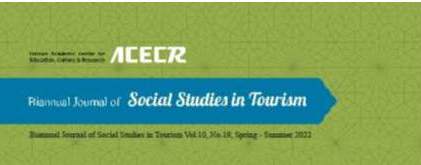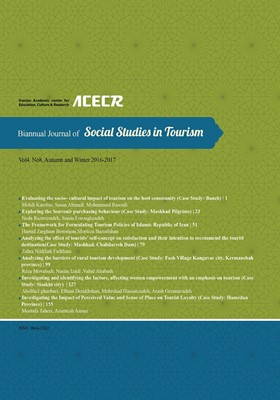-
-
List of Articles
-
Open Access Article
1 - Evaluating the socio– cultural impact of tourism on the host community (case study: Baneh)
mehdi karoubi Mohammad r -
Open Access Article
2 - Exploring the Souvenir purchasing behaviour (Case study: Mashhad Pilgrims)
-
Open Access Article
3 - The Framework for Formulating Tourism Policies of Islamic Republic of Iran
Hamid Zargham Boroojeni -
Open Access Article
4 - The effect of tourists’ self-concept on satisfaction and their intention to recommend the tourist destination )Case study: Mashhad, Chalidarreh Dam(
-
Open Access Article
5 - Analyzing the barriers of rural tourism development (Case study: Fash Village Kangavar city, Kermanshah province)
-
Open Access Article
6 - Factors affecting women empowerment with an emphasis on tourism (Case study: Sisakht city)
-
Open Access Article
7 - The Impact of Perceived Value and Sense of Place on Tourist Loyalty (Case Study: Hamedan Province)
mostafa taheri
-
The rights to this website are owned by the Raimag Press Management System.
Copyright © 2017-2025







